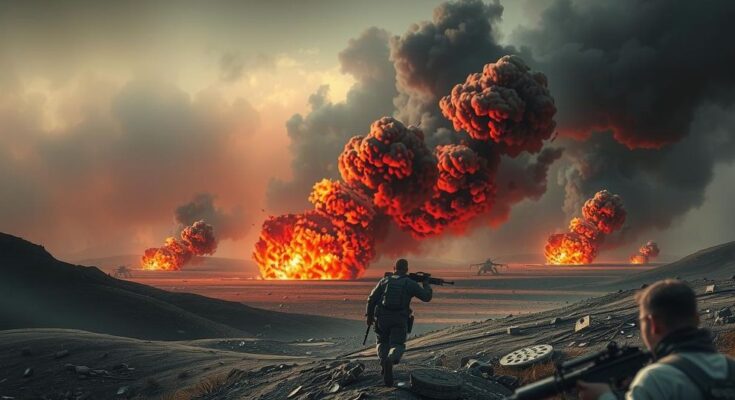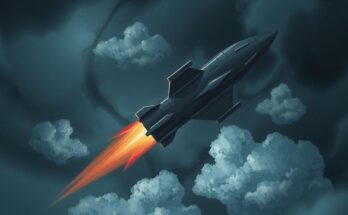The U.S. has escalated its bombing campaign against Yemen’s Houthi rebels, labeled “Operation Rough Rider,” targeting over 1,000 sites. Analysts express skepticism about the campaign’s effectiveness, as the Houthis appear undeterred, possibly strengthening their ties to Iran. While U.S. officials claim progress, the situation raises difficult questions about the overall strategy and its consequences amid ongoing nuclear negotiations with Iran.
Since March 15, the United States has ramped up its aerial operations against Yemen’s Houthi rebels, who are aligned with Iran. Known as “Operation Rough Rider,” this military initiative has reportedly targeted over 1,000 sites to disrupt Houthi threats to shipping in the Red Sea and pressure Iran amid ongoing nuclear discussions. However, experts are expressing skepticism about the effectiveness of these measures.
Colin Clarke, a policy and research director at the Soufan Group, stated, “The Houthis remain undeterred.” Despite the American efforts resulting in some destruction of Houthi assets, the insurgents seem to be finding ways to leverage these actions to their advantage. According to Clarke, the short-term losses may lead to increased recruitment and funding for the Houthis.
Jeremy Binnie, a defense analyst at Janes, reinforced the idea that recent Houthi attacks—particularly those targeting Israel and downing American drones—cast doubt on U.S. claims of improved operational capacity against them. He noted, “It is arguably getting increasingly embarrassing for the United States every time the Houthis launch an attack on Israel or shoot down an MQ-9.”
Furthermore, a not-so-distant incident involving a U.S. F/A-18 fighter jet, which fell off the USS Harry S. Truman while evading a Houthi strike, has added to the prevailing notion that the Houthis are still a formidable force in the region. Meanwhile, the Houthis have continued their assaults, launching missiles at Israel, including successful strikes on May 2 that prompted Israel to deploy air defenses.
The U.S. Central Command (CENTCOM) maintains that their actions have reduced the frequency and potency of Houthi strikes. They reported a 69 percent decrease in ballistic missile launches and a 55 percent drop in attacks from one-way drones as of April 27. CENTCOM emphasized that the Houthis depend heavily on Iranian support to sustain their military capabilities.
Interestingly, analysts are cautioning that these bombing campaigns might be inadvertently tightening the bond between the Houthis and Tehran. Recognized as the Ansarallah movement and labeled a terrorist organization by the U.S., the Houthis are integral to Iran’s “axis of resistance,” which has suffered challenges over the past year. However, following the onset of the Gaza conflict in October 2023, the Houthis have asserted a more significant role, claiming responsibility for various strikes in solidarity with Palestine.
In a May 1 social media post, U.S. Defense Secretary Pete Hegseth sent a message to Iran, indicating that there would be consequences for their actions. Nevertheless, some experts are not convinced that these military operations will alter Iran’s or the Houthis’ military strategies. Clarke pointed out, “If anything, the strikes have pushed the Houthis closer to Iran,” suggesting that future negotiations regarding a nuclear agreement might not shift Tehran’s approach.
Binnie shared Clarke’s doubts, stating, “U.S. officials might hope the campaign pressures Iran, but it’s difficult to say if that is happening.” A planned fourth round of nuclear talks in Rome on May 3 has been postponed due to unspecified logistical issues. As the bombing campaign continues, questions loom about how effective it is in curbing Houthi aggressions and diminishing their political support.
In summary, the U.S. military’s intensified air campaign against the Houthis seems to be having a mixed impact, with experts arguing that rather than reducing Houthi capabilities, it may be strengthening their ties to Iran. As they continue to launch attacks and garner support, the efficacy of the U.S. strategy is increasingly uncertain, casting doubt on its long-term viability. The relationship dynamics in the region become even more complex as the U.S. finds itself in a precarious position looking to influence ongoing negotiations with Iran amid rising Houthi activities.
Original Source: www.rferl.org




